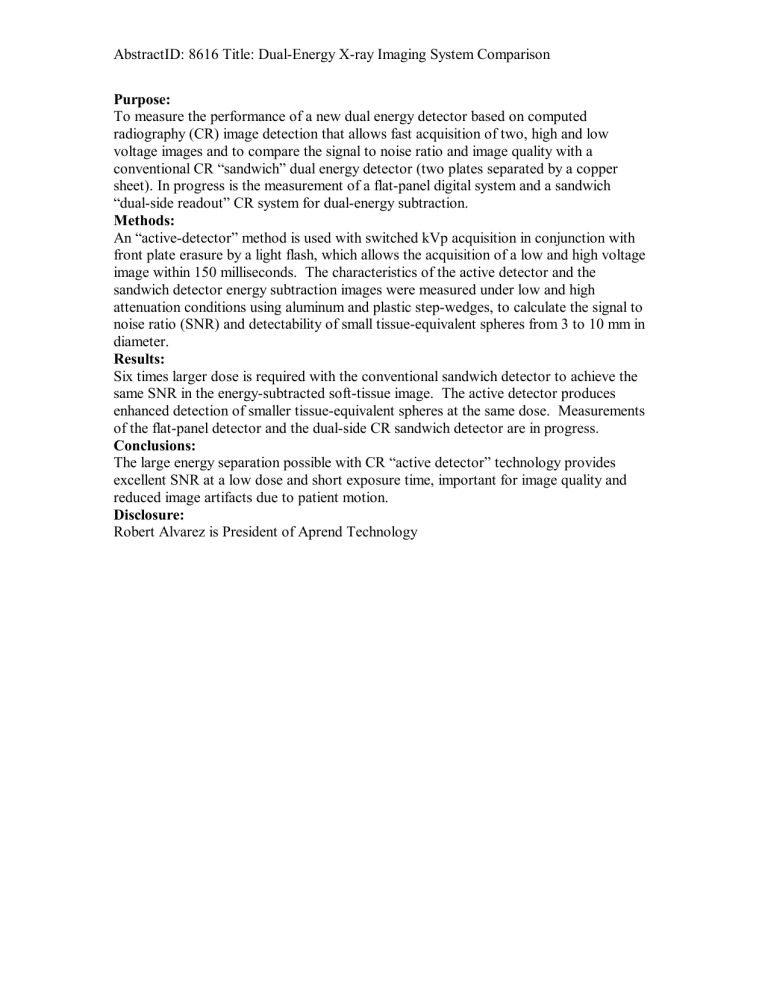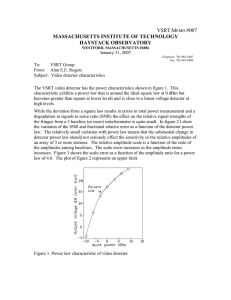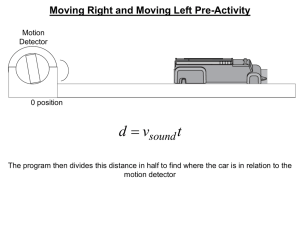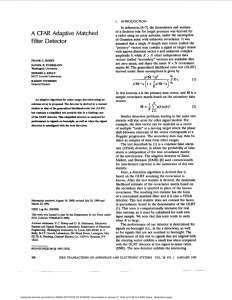AbstractID: 8616 Title: Dual-Energy X-ray Imaging System Comparison Purpose:

AbstractID: 8616 Title: Dual-Energy X-ray Imaging System Comparison
Purpose:
To measure the performance of a new dual energy detector based on computed radiography (CR) image detection that allows fast acquisition of two, high and low voltage images and to compare the signal to noise ratio and image quality with a conventional CR “sandwich” dual energy detector (two plates separated by a copper sheet). In progress is the measurement of a flat-panel digital system and a sandwich
“dual-side readout” CR system for dual-energy subtraction.
Methods:
An “active-detector” method is used with switched kVp acquisition in conjunction with front plate erasure by a light flash, which allows the acquisition of a low and high voltage image within 150 milliseconds. The characteristics of the active detector and the sandwich detector energy subtraction images were measured under low and high attenuation conditions using aluminum and plastic step-wedges, to calculate the signal to noise ratio (SNR) and detectability of small tissue-equivalent spheres from 3 to 10 mm in diameter.
Results:
Six times larger dose is required with the conventional sandwich detector to achieve the same SNR in the energy-subtracted soft-tissue image. The active detector produces enhanced detection of smaller tissue-equivalent spheres at the same dose. Measurements of the flat-panel detector and the dual-side CR sandwich detector are in progress.
Conclusions:
The large energy separation possible with CR “active detector” technology provides excellent SNR at a low dose and short exposure time, important for image quality and reduced image artifacts due to patient motion.
Disclosure:
Robert Alvarez is President of Aprend Technology





